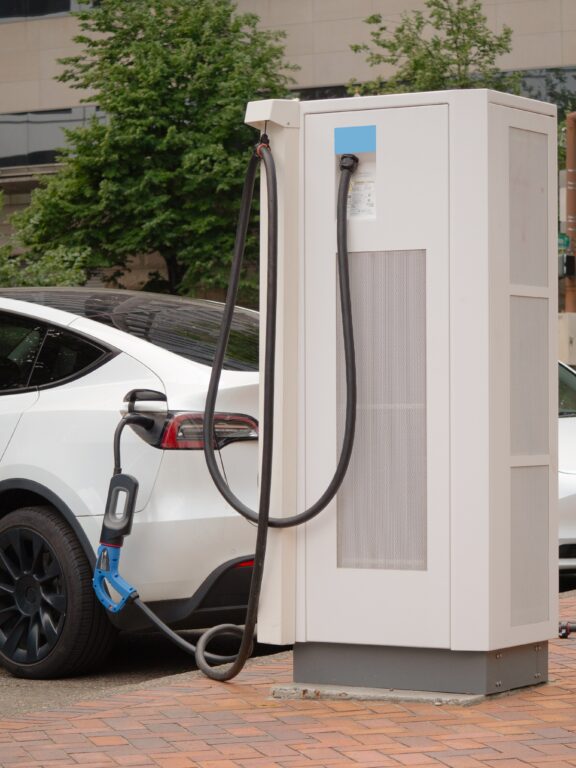When servicing an electric vehicle (EV), there are many things you do not need to do – no oil change, new spark plug, nor replacing a fan belt that may have suffered wear and tear since the last service. But does a smaller range of parts translate into a reduction in servicing expenses? Lets have a look. By Vanessa Rogers on behalf of Executive Placements.
Researchers at Forbes believe EVs are far more reliable than ICE vehicles, as a result of the massive reduction in drivetrain components – from 2 000 down to just 20 moving parts. Additionally, the website’s automotive brand expert, Tom Rafferty, explains that electric vehicles are typically cheaper to “fuel” too, when you compare the cost of petrol or diesel, with that of electricity.
Further, Rafferty reveals that aside from brake and tyre-related attention at sensible intervals, once the cost of buying an EV comes down with its increased popularity up to 2030, owners are likely to find that they have a servicing bargain on their hands.
But what exactly does EV servicing entail?
The Australian website Which Car?, enthuses that EVs have fewer parts, so should theoretically be more reliable. Their specially designed tyres are more durable, and regenerative braking (see explanation below) limits wear on brake pads.
On the other hand, EVs still need regular servicing on their consumables; weigh more as a result of the battery – and offer more rapid torque which could wear tyres out faster when driven harder; and the minimal use of their physical brakes (aside from when coming to a complete stop) could result in disc corrosion, leading to the need for mechanical attention/replacement replacement that much sooner.
For those who have worked as an automotive engineer for some time already, but are now looking for engineering jobs focused on EV maintenance, you’ll be aware that the parts listed below require maintenance across both types of vehicles:
• electronic system, software, and sensors;
• auxillary battery;
• tyres;
• brake pads and discs;
• suspension;
• transmission gear fluid and parking brake;
• power-steering fluid and rack;
• windscreen, wipers, and washer fluid;
• HVAC system and filters;
and
• all perished hinges, latches, nuts and bolts.
Learning the EV ropes
On the other hand, you’ll have your work cut out for you in learning how to service EV-only maintenance parts, i.e. the high-voltage battery pack and coolant, cooling fans and fluids, battery pack health diagnostics, charge-port condition, battery maintenance system software, and exterior pedestrian warning system, if applicable.
In effect, say the experts at Auto Trader, there’s very little to service on an EV. It’s intervals will likely be set at 30 000km or more, rather than the 15 000km of a petrol/diesel vehicle – so those working in mechanic jobs in Cape Town, Joburg, and other main centres in South Africa, are probably only going to welcome valued clients into their workshops every two years or so.
Items on the invoice will likely include: brakes, suspension and hinges; replacement of the pollen filter; and a look at the tyre condition. On this note, former motorsport commentator Chad Lückhoff reveals: “EV owners have been surprised at the lack of mileage they’ve been able to get from a set of tyres… (due to) the increased torque generated by the electric drivetrain, and the vehicle’s additional weight. This can be countered by driving more sensibly,” he says, ” and not using full throttle at every given opportunity.”
In effect, EV owners will be able to save when it comes to servicing and maintenance costs, with their reduction gearboxes seldom needing the oil changed; nor the liquid having to be topped up in the car’s cooling system.
Referring to research undertaken in the US and Europe, Lückhoff advises that global fleet management analysts say EVs are around 50 to 60 percent more cost effective to run, over the long-term, than ICE vehicles – and even concerns about replacement battery costs are not worth fretting over. Most models of EV are sold with an eight-year warranty on the battery, and can continue to operate without issue for quite some time after this warranty has come to an end.
Define: regenerative braking?
A key feature of the electrified drivetrain, regenerative braking allows an EV to save energy during the slowing process – which can be converted back into battery charge. This freshly regenerated force can then be harnessed when the driver places his/her foot on the accelerator.
